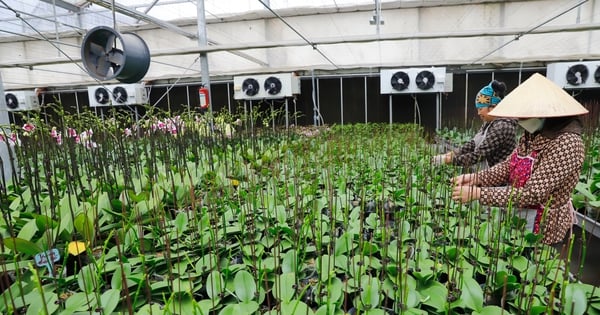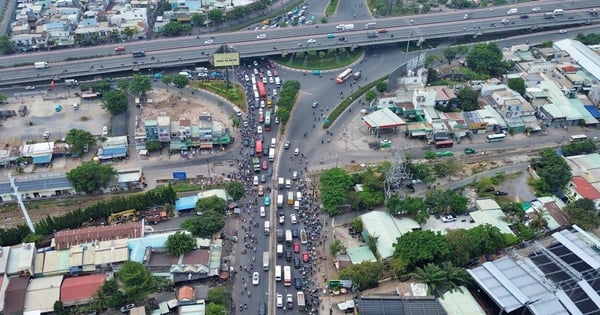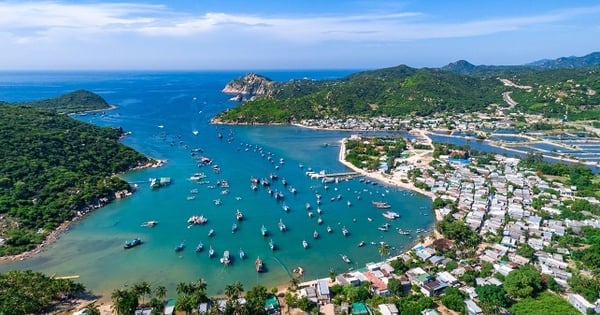According to forecasts, from now until March 10, cold air will continue to affect our country's weather and cause many days of light rain, drizzle and fog in the North.
Detailed developments of the wet season in the North
Mr. Nguyen Van Huong - Head of Weather Forecast Department, National Center for Hydro-Meteorological Forecasting said: "February is still the main winter month in the North. From now until the end of February, the Northern and North Central provinces will receive many more cold spells. These cold spells are still capable of causing severe cold in a large area in the North as well as the North Central region.
The cold air at the end of the season often causes cold and humid conditions, in contrast to the dry conditions caused by cold air at the beginning of the season. However, the forecast for drizzle and humidity this year is expected to change compared to last year.

Detailed developments of the long-term damp and drizzle spell in the North, when will the damp spell in the North end?
According to Mr. Huong, humid spells usually last from 3-5 days, even a week, and only end or change when the Northeast monsoon arrives.
"The phenomenon of dampness is a phenomenon that often occurs during the spring season, when cold air masses no longer move from North to South but move to the East, causing the Northeast to East wind in the Northern region to form and cause the humidity in the air in the Northeast region and the capital Hanoi to increase, sometimes reaching the saturation threshold, causing dampness to occur," Mr. Huong added.
Damp weather usually occurs in late February, March and April. It is predicted that this year the damp weather will not be as strong as in 2024.
After the humid period, the hot season will also begin in the Northern region. The hot period will likely begin at a level similar to the average of many years in the regions. Hot weather is likely to appear in April in the Northwest region. The intensity of hot weather in 2025 is likely to be less severe than in 2024.
A representative of the National Center for Hydro-Meteorological Forecasting said that from February 11 to March 10, the average temperature across the country was generally at a level similar to the average of many years, with the Northwest region being 0.5-1.0 degrees Celsius higher than the average of many years during the same period.
Experts warn that humid weather causes difficulties in people's daily activities and negatively affects their health. High humidity also creates a favorable environment for agents that cause respiratory diseases and allergies, especially for children and the elderly.
Total rainfall in the Northern and North Central regions is generally approximately the same as the average of many years; other regions are 10-20mm higher, in some places over 30mm higher than the average of many years in the same period.
From now until mid-March, the equatorial low pressure trough tends to be active, lifting its axis to the north and potentially affecting the southern East Sea area, not excluding the impact on the mainland of the southern provinces of our country.
During the forecast period, the Central and Southern regions are likely to experience some scattered showers and thunderstorms. The cold air is likely to cause strong winds and large waves, affecting the activities of ships. On land, the cold air shifting eastward and changing can cause many days of light rain, drizzle and fog, especially in the northeastern and north central provinces, which will affect people's activities and traffic.
Latest news on tropical depression
At 7:00 a.m. on February 13, the center of the tropical depression was determined to be at about 13.3 degrees North latitude; 111.3 degrees East longitude, in the sea west of the central East Sea. The strongest wind near the center of the tropical depression reached level 6 (39-49 km/h), gusting to level 8. This tropical depression is moving northwest at a speed of 5-10 km/h.
It is forecasted that by 7:00 a.m. on February 14, the tropical depression will continue to move northwest at a speed of about 5km/h and will be located at 14.1 degrees North latitude; 110.8 degrees East longitude, in the offshore waters from Quang Ngai to Phu Yen. The strongest wind remains at level 6, gusting to level 8. The dangerous area is determined from latitude 12.0 to 15.5 degrees North latitude and longitude 109.5 to 112.5 degrees East longitude. The main affected area is the west of the area between the East Sea and the offshore waters from Quang Ngai to Khanh Hoa with a disaster risk level of level 3.
At 7:00 a.m. on February 15, the tropical depression continued to move northwest at a speed of about 5 km/h and gradually weakened into a low pressure area. At this time, the center of the low pressure area is forecast to be located at about 14.6 degrees North latitude; 110.5 degrees East longitude, in the offshore waters from Quang Ngai to Phu Yen. Wind force decreased to below level 6.
Due to the influence of the tropical depression, the western area of the central East Sea, the southwestern sea of the northern East Sea (including the waters of the Hoang Sa archipelago) and the offshore waters from Quang Ngai to Khanh Hoa will have strong winds of level 6, gusting to level 8, causing rough seas. Waves in the western area of the central East Sea and the southwestern part of the northern East Sea may be from 2.0 to 3.5m high. From February 14, the offshore waters from Hue to Binh Dinh will also have waves of 2.0 to 3.0m high.
Vessels operating in the above areas should pay special attention to the risk of storms, whirlwinds, strong winds and large waves. Authorities and fishermen should closely monitor the development of the tropical depression and take measures to ensure the safety of people and vehicles operating at sea.
Source: https://danviet.vn/dien-bien-chi-tiet-ve-dot-nom-am-mua-phun-dai-ngay-o-mien-bac-khi-nao-mien-bac-het-nom-am-2025021309094416.htm























































Comment (0)